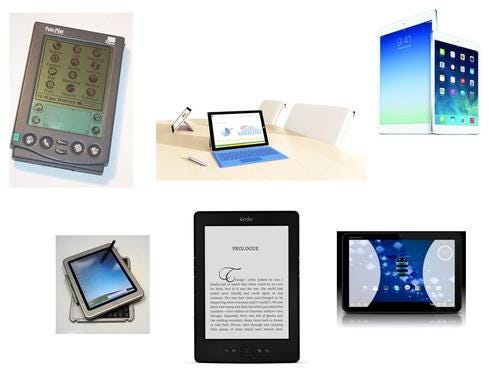Bejeweled ring buzzes and lights up with incoming calls and messages. Is this the right direction for wearable devices?


Microsoft Surface Pro 3: 10 Tablets Paved Its Way
Microsoft Surface Pro 3: 10 Tablets Paved Its Way (Click image for larger view and slideshow.)
Ringly recently announced a new wearable it's marketing to women. The device, which is an actual gemstone ring, is meant to prevent women from missing calls or texts that might otherwise go unnoticed because their phone is stuffed into a purse. It claims to give women the freedom to put their phone away with confidence.
Ringly is controlled through a dedicated app for Android and iPhone smartphones; the smartphone pairs with the ring using Bluetooth Low Energy. The ring can be set to vibrate and light up when the smartphone receives a call, text, email, or calendar alert. Ringly says the app can also push alerts from apps such as Facebook, Instagram, LinkedIn, Pinterest, Poshmark, Snapchat, Tinder, Tumblr, Twitter, Uber, and Vine if the wearer so chooses. Ringly will even alert wearers when they wander too far from their smartphone.
The app lets users dial in a limited number of settings, such as vibration patterns and light colors that are coded to certain incoming messages. The wearable is made of 18K gold and comes in several different stone varieties, including black onyx, rainbow moonstone, pink sapphire, and emerald. Ringly also created a ring box that both stores and charges the device. The wearable will last about three full days on a single charge, according to the company.
[Is Amazon prepping a 3D-capable smartphone? Read Amazon's June 18 Event: Smartphone Release Party?]
"Our goal is to create products that are both stylish and useful, that women will be proud to wear," said Ringly co-founder and CEO Christina Mercando. "We believe that the future of wearables is in building discreet technology that integrates seamlessly into your life and makes your day-to-day easier."
Ringly is currently available for preorder at the "early-bird" price of $145 (retail price is $195), but it won't ship until fall. At launch, the device will be available in only three sizes: 6, 7, and 8. According to Ringly, the first 1,000 devices sold will ship with an actual diamond embedded in the side of the ring. The company is also offering discounts for referrals. Ringly is backed by First Round Capital, Andreessen Horowitz, and PCH.
{image 1}
Ringly is entirely different from Smarty Ring, which was revealed in December, though it offers many of the same functions. The Smarty Ring, which aims to replace the smartwatch with something smaller and less intrusive, can be used for notifications, including incoming and outgoing calls, alerts for text and email messages, and real-time updates from Facebook, Twitter, Hangouts, and Skype. Like Ringly, the Smarty Ring is controlled through a separate Android/iOS app, and it can be customized. Smarty Ring met its Indiegogo campaign goals last year, but it has yet to launch.
Both devices highlight just how undefined the market for wearables truly is: There are watches, bands, rings, glasses, earpieces, shirts, and more. Many of these devices, however, rely on a nearby smartphone for most of their features – Ringly, for example, is completely useless without the app to push notifications through the Bluetooth connection. While this integration adds functionality to the wearable, it would behoove device makers to craft wearables that can act independently from smartphones.
What do you think -- is this the right direction for wearables? Are Ringly and similar devices what consumers want?
What do Uber, Bank of America, and Walgreens have to do with your mobile app strategy? Find out in the new Maximizing Mobility issue of InformationWeek Tech Digest.
About the Author(s)
You May Also Like







